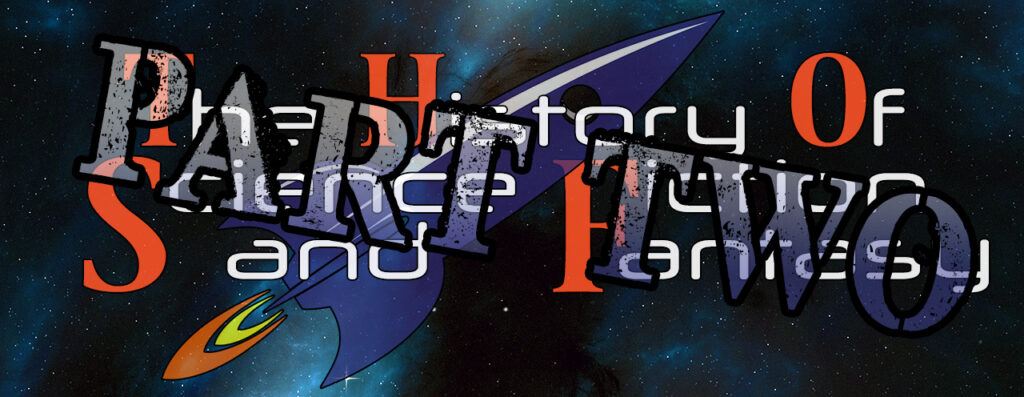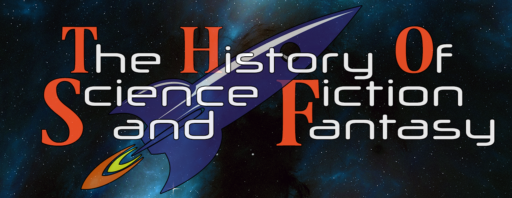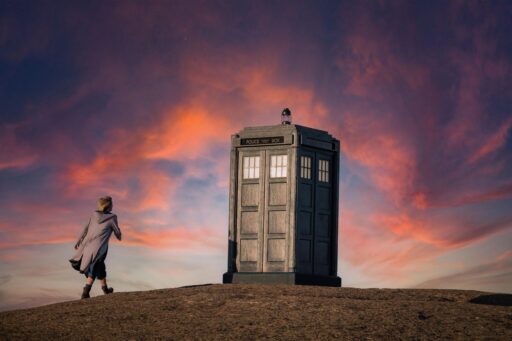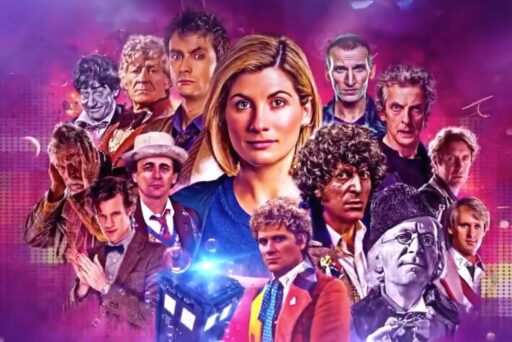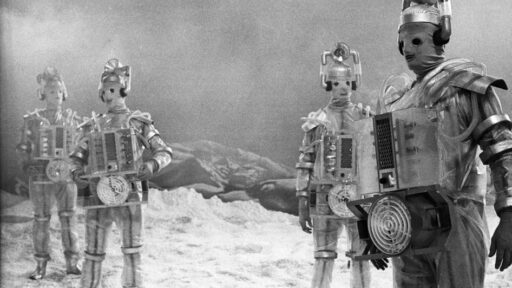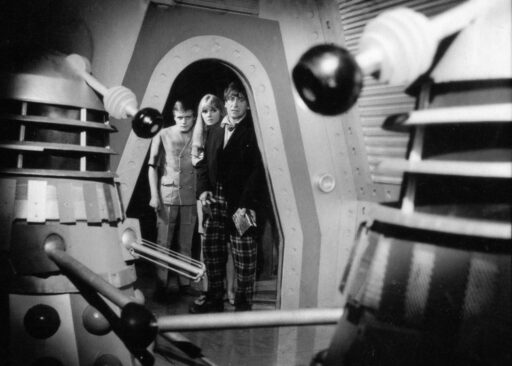It was the second half of the 19th century when science fiction really began to emerge as a recognizable genre. And very early on it even established two of the cornerstone sub-genres of science fiction in the form of time travel stories and apocalyptic fiction.
There are two names that everyone is familiar with, whether they are a fan of science fiction or not. Jules Verne and H. G. Wells are recognized as both pioneers and giants of the genre. There were other authors as well though. Some familiar names, others largely unknown today.
One of the earliest science fiction books was A Voyage To The Moon by George Tucker, which was published in 1827. The book which is a satire, was published under the pseudonym Joseph Atterley. Tucker was one of Edgar Allan Poe’s instructors at University. The novel features one of the first uses of anti-gravity technology.
Poe is commonly known as a writer of gothic stories, however he also published a number of science fiction stories and was perhaps the first writer to tackle two sub-genres.
The Unparalleled Adventure of One Hans Pfaall was a short story published in the June 1835 issue of Southern Literary Messenger. The story which was written as a hoax story and purports to be a manuscript that details how Pfaall intended to reach the moon using a new balloon and a device that would compress the vacuum of space into breathable air. As such it is one of the earliest examples of a scientific approach to space flight in fiction.
In 1839, Burton’s Gentleman’s Magazine published The Conversation of Eiros And Charmion and it may be the first apocalyptic science fiction story. In it Eiros describes to Charmion (both dead) how the world ended due to loss of nitrogen from the atmosphere.
Apocalyptic fiction wasn’t the only sub-genre that Edgar Allan Poe helped to create. A Tale of the Ragged Mountains was published in Godey’s Lady’s Book in 1944 (and later included in Poe’s collection Tales in 1845). The story may be the first example of physical time travel in science fiction.
With these and several other stories, Poe made a major contribution to the birth of modern science fiction, a contribution which seems to be largely overlooked, perhaps due to the lasting impact of his horror work.
Jules Verne

By the second half of the 19th century, modern science fiction had definitely arrived. One of the most significant and biggest names is Jules Verne. Verne himself acknowledged that some of his work was influenced by the earlier tales of Edgar Allan Poe. During the 1860s, Verne published two of the most influential science fiction books of all time.
In 1864 Journey to the Center of the Earth presents us with a fantastical interior of the planet. On the surface then this is not so much science fiction as fantasy. However, we have to consider the scientific knowledge available at the time of writing and the nature of the story itself. The protagonist is a professor in search of scientific knowledge.
Journey to the Center of the Earth has captured the public imagination ever since it’s original publication and has been adapted to television and film on multiple occasions. Some more faithful than others.
From the Earth to the Moon, published in 1865 is a lesser known tale from Verne that is another early example of space flight. The story is particularly significant because it presents an almost credible method of travel in the form of a projectile fired from a giant cannon. Verne actually attempted to calculate the requirements for such a cannon. This is a perfect example of modern science fiction.
Verne’s other well known science fiction tale is 20,000 Leagues Under The Sea which was published in 1869. As is common with Jules Verne’s work, the protagonists are scientists and he has some remarkably prophetic ideas about what submarines might be capable of.
Sword and Planet Science Fiction
In 1880 Percy Greg wrote Across the Zodiac: The Story of a Wrecked Record which is the original “sword and planet” story (a sub-genre that seems to have largely died out). Edgar Rice Burroughs would become the most famous author of this type of story, but his work would not be published until the next century.
The Genre Widens
Flatland: A Romance of Many Dimensions by Edwin A. Abbott which was published in 1884 showed the breadth which science fiction could encompass. Set in a two dimensional world referred to as Flatland, the story is a satire on the rigid social hierarchy of Victorian society.
What makes it science fiction is the way it represents dimensions as a three dimensional being visits a resident of Flatland. Ironically the Flatlander is able to acknowledge the possibility of four or more dimensions, while the three dimensional being seems unable to.
Robert Louis Stephenson is well known for his adventure fiction, but one of his most unique stories is The Strange Case of Dr. Jekyll and Mr. Hyde which was first published in 1886. Often referenced as a horror story, it is actually a exploration of mental illness and split personalities. Science Fiction was no longer limited purely to the “hard” sciences.
Another early example of time travel stories is Mark Twain’s A Connecticut Yankee in King Arthur’s Court which was published in 1889. However there is no scientific explanation for the time travelling so it probably sits more on the fantasy end of the genre. At this point fantasy was really not separated in any obvious way from science fiction.
H. G. Wells

In the 1890s Wells published a series of science fiction stories that made him perhaps the best known science fiction writer of all time.
The Time Machine in 1895 was a novella that used time travel as a method to explore social change and the social fears of the time. The slow evolution of the human race was apparently inspired by Charles Darwin’s Origin of the Species.
In The Island of Doctor Moreau (1896) , Wells again tackled a topical issue as the notion of animal rights was emerging. Rather than presenting us with purely fantastical talking creatures, Wells instead gave us a Doctor who experimented on humans creating human/animal hybrids. It’s a theme that still resonates today.
1897’s The Invisible Man gives us a scientific basis for the invisibility of the central character. The notion is that by changing a body’s refractive index to that of air, it will become invisible. More interesting though is Well’s exploration of the effect this would have on a human psyche. Wells consistently took a scientific concept and used it to explore its impact on society.
Alien invasion is the subject matter of The War of the Worlds (1898). But unlike modern films, the solution does not involve massive explosions. Rather a simple virus brings the aliens to their knees.
When the Sleeper Awakes (1899) is a lesser known H G Wells story about a man who sleeps for two centuries and awakes as the richest man in the world. But London has changed radically while he slept. Wells actually re-wrote this story substantially and republished it as The Sleeper Wakes in 1910.
Alien Planets
In 1897 German author Kurd Lasswitz published Two Planets which is about a group of explorers who find a Martian base in the Arctic. The book references the “canals” on Mars which were the result of a mis-translation of the work of astronomer Giovanni Schiaparelli and of course became stuck in society’s collective memory.
In Edison’s Conquest of Mars (1898) Garrett P. Servis wrote an unauthorized sequel to H. G. Wells The War of the Worlds. The book featured Thomas Edison as its hero and was in fact endorsed by Edison. In the book Edison travels to Mars and helps Earth to destroy the Martian’s ability to make war. Perhaps the first example of the Space Opera sub-genre, it is not at all in the spirit of Wells original story. It’s also a very early example of the habit of re-working or producing sequels to early science fiction stories.
Interestingly the book does include space suits, but does not feature any form of radio even though radio experiments were occurring by this time. Instead the spaceships communicate by flags or lights much like naval ships did. We do however get the first examples of Aliens building the Pyramids and disintegrator guns.
Fantasy in the 19th Century
While elements of fantasy can be found in many tales including fairytales there is relatively little prior to the twentieth century that would be recognizable to the modern fantasy genre. The likes of William Makepeace Thackery and Hans Christian Andersen continued to evolve the fairytale tradition but it has been suggested that The Princess and the Goblin (1872) and Phantastes (1859) by George MacDonald might be the closest to the origin of modern fantasy with Phantastes in particular claimed to be the first fantasy novel written for adults.

The Well at the World’s End (1896) Morris is another fantasy story of note during this period. Amongst other significant elements this story is set in an invented fantasy world, perhaps a first and a significant step for the genre. It is speculated that both J.R.R. Tolkien and C.S. Lewis were inspired by Morris. Lewis is known to have written an essay on the author and it is notable that Morris was particularly interested in the Middle Ages and used an archaic style for his work because that, something that would appeal to Tolkien.
Lewis Caroll’s Alice’s Adventures in Wonderland (1865) is perhaps more typical of a fantasy of the period, albeit a defining one. Aimed primarily at children it is set in what is clearly implied to be a dream world that reflects the real one in a warped fashion.
Also worthy of note is the author H. Rider Haggard whose work formed the basis of the Lost World sub-genre with stories like She (1887). These stories while set in the “real” world were in locations that the reading audience of the time would be largely unfamiliar with allowing for the inclusion of many fantasy elements.
Discover more from Veristopia
Subscribe to get the latest posts sent to your email.


